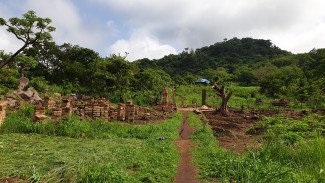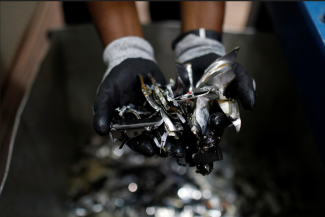Trade ministers in the Pacific approve the region’s first strategic framework on Quality Infrastructure
In Fiji it’s known as yaqona. In Samoa locals call it ‘ava, while in some parts of Vanuatu it’s referred to as malok or malogu. The rest of the world knows it as kava – a drink made from the crushed roots of the Piper methysticum plant that produces sedative, euphoric effects.
Kava has played an important role as a traditional medicine and recreational drink across the Pacific islands for thousands of years and is an integral part of Pacific island culture. However, it was kava’s reputation as a treatment for anxiety that led to a surge in popularity in Europe – in the 1990s, US$200 million of dried kava was being exported from Vanuatu to Europe each year for use by the pharmaceutical industry.
[related-article]
“Kava was being used in pills and elixirs that could be marketed as an alternative to synthetic anti-anxiety medications which, unlike kava, had addictive side effects,” said Ruth Amos, acting CEO of Vanuatu’s Bureau of Standards.
However, things came to an abrupt halt in 2001 when 83 Europeans taking kava tablets passed away from liver toxicity, leading to an EU ban on exports that would last for 15 years.
“At the time of the EU ban, there were no laws in place to regulate the export of kava. Testing was non-existent. As a result, it became necessary to draft legislation to regulate the market,” Amos said.
In 2002, Vanuatu introduced the Kava Act, which stipulated the standard of kava for the domestic and export market.
“We started quality testing kava in a laboratory using highly specialised instrumentation. But it was expensive to calibrate so we developed other methods that are simpler and that we can train kava exporters to use. That way they can know the quality of the dried kava they are purchasing from farmers,” Amos said.
How things have changed in 20 years
The kava legislation, laboratory testing and instrument calibration are examples of a broader system known as Quality Infrastructure.
“Quality Infrastructure comprises all the policies, laws, institutions and services helping producers to prove that their goods or services are not only safe but also of high quality,” said Andrea Giacomelli, a trade expert from the Pacific Islands Forum Secretariat.
“Normally this means developing and approving standards, having bodies that can certify compliance to the standards, entities that accredit the certification bodies, and mutual recognition agreements between countries or producers that stipulate acceptance of standards, and accreditation practices.”
Consumer demand over the past 20-30 years has largely driven the development of the Quality Infrastructure ecosystem, Giacomelli said.
“For example, 20-30 years ago when you were exporting raw materials, as long as you could demonstrate safety then you were able to fetch a good price. But as consumers have become more aware of quality – whether a product is organic, or it is produced according to safe and equitable practices – exporting countries have had to take this into consideration to remain competitive,” he said.
Moreover, when it comes to the Pacific, the past two decades have seen tremendous growth in the tourism sector, as well as the export of products adding value to raw materials – and as a consequence the need to demonstrate quality has become more important.
The kava story demonstrates the importance of quality standards – not only does it have huge economic benefits, but it can also save lives.
Ruth Amos, acting CEO of Vanuatu Bureau of Standards
“Tourism as a service is very quality-dependent. In order to convince tourists to travel to your destination, you will want to demonstrate that your accommodation is up to certain quality standards, that activities offered to tourists are compliant with international safety protocols, and that your food is locally sourced so as to minimise the negative impact on the environment whilst supporting local communities,” Giacomelli said.
“COVID-19 adds a further quality dimension to the equation, as in the post-pandemic environment, people will only travel to countries which apply standards suitable to mitigate the risk of infection.”
The Pacific region has also become increasingly embedded in a network of regional and global trade agreements whose benefit can only be realized on the condition that standards between trading partners are harmonised.
The issue of Quality Infrastructure is not new in the Pacific. Back in 2005, a number of studies sponsored by the Pacific Islands Forum Secretariat already noted the challenges facing the Pacific in developing Quality Infrastructure, and proposed forms or regionalism to address the prohibitive costs involved in setting up adequate systems in each country.
“To get a globally accredited certifier for each good, or to have a top global product testing laboratory, or even a bureau of standards would be too expensive and unnecessary for each individual country,” Amos said.
“This is why it is important for us to collaborate and develop a regional Quality Infrastructure system,” she said.
Learning from the Caribbean
To begin the process of developing a regional Quality Infrastructure system, the Pacific Islands Forum Secretariat has been raising awareness of its importance and collecting data to update the diagnostic studies conducted in 2005.
[related-article]
At the end of 2019, they ran a regional workshop attended by government and private sector participants from across the Pacific, together with donor countries and Quality Infrastructure agencies where they developed a regional quality statement, and set the foundations for a medium-term conceptual framework including a list of priorities for developing a regional Quality Infrastructure system.
“Regionalism is not as developed in the Pacific as most countries only got independence in the 1980s. So, it was a pleasant surprise to see the workshop participants enthusiastically support a regional approach to Quality Infrastructure,” Giacomelli said.
One of the most supportive partners, Giacomelli said, was the Caribbean’s regional Quality Infrastructure agency – CARICOM Regional Organisation for Standards and Quality (CROSQ).
“In the Caribbean, where there are many small island developing states like in the Pacific, the Quality Infrastructure work at a regional level started about 40 years ago, so they are they are much more advanced than we are in the Pacific. We are really following their example,” he said.
Banding together
For Amos, developing a regional platform will strengthen the sense of camaraderie in the region.
“It took 7 years to set up Vanuatu’s Bureau of Standards because we didn’t have anyone to guide us, who we could ask questions to. It was very difficult. A regional Quality Infrastructure body can be a platform for sharing expertise and knowledge so that countries that are considering setting up their own Bureau of Standards can receive support,” she said.
She sees this as an opportunity for the Pacific to band together. And, she’s seen evidence of this collaboration in the way that the region handled the EU kava ban.
“Rather than trying to leave it to Vanuatu to fight the kava ban on its own, the five Pacific countries that were exporting kava banded together to improve kava quality for the benefit of everybody,” she said.
Thanks to this, in 2017 the EU lifted its ban on kava.
“In the past six years, Vanuatu has experienced a tenfold increase in the export value of kava and this continues to increase. In the first 4 months of 2019, kava exports were valued at VT1,255 million (US$10 million), which is more than the total value for 2016 and 2017,” Amos said.
“The kava story demonstrates the importance of quality standards – not only does it have huge economic benefits, but it can also save lives.”
Header image - ©European Commission REX
If you would like to reuse any material published here, please let us know by sending an email to EIF Communications: eifcommunications@wto.org.



